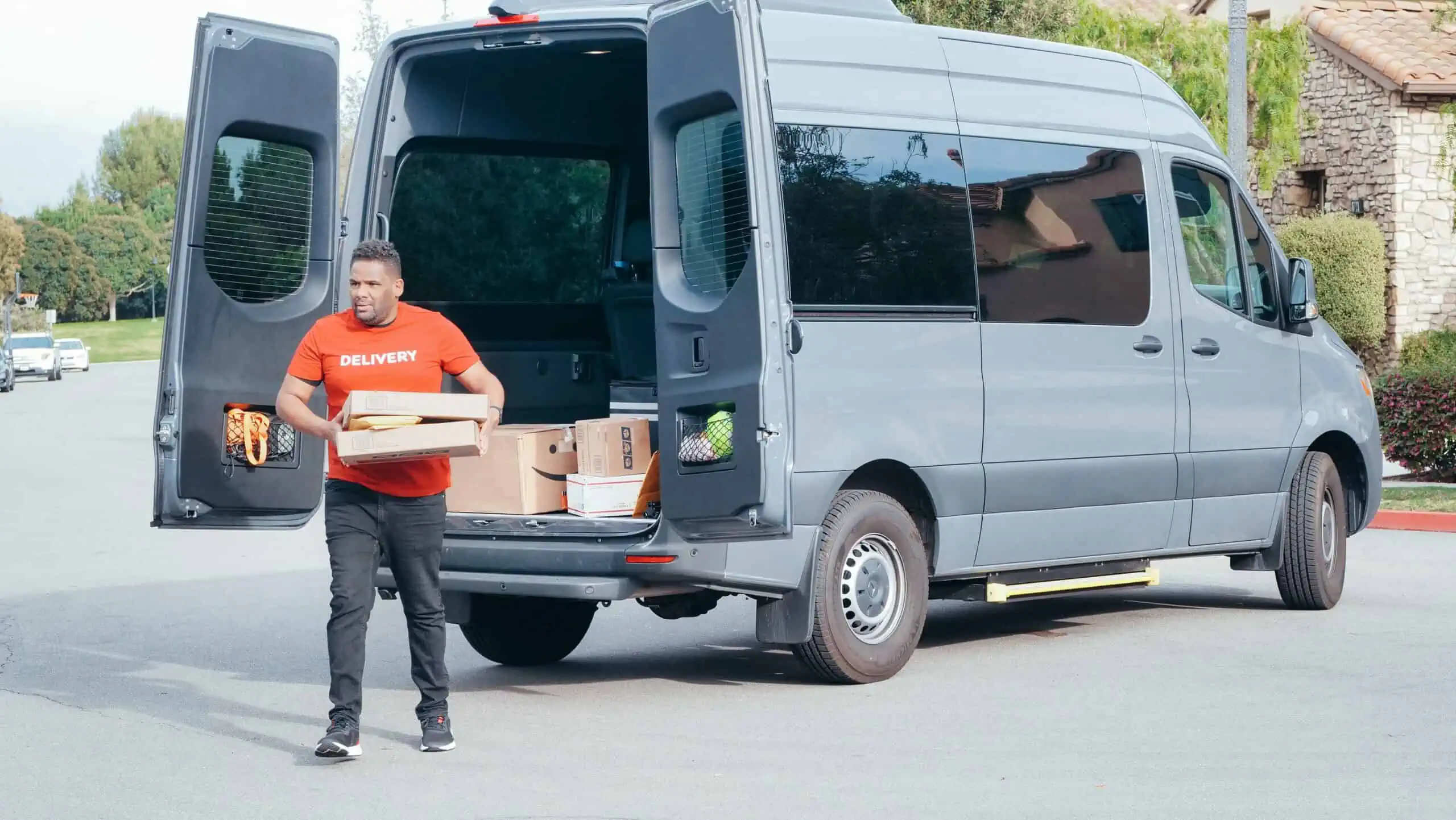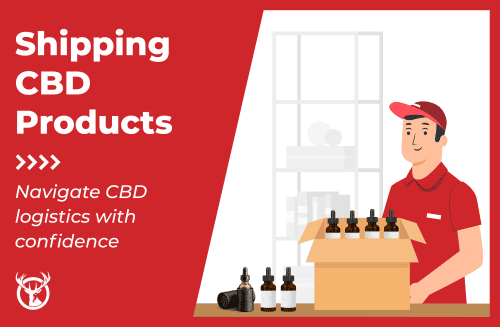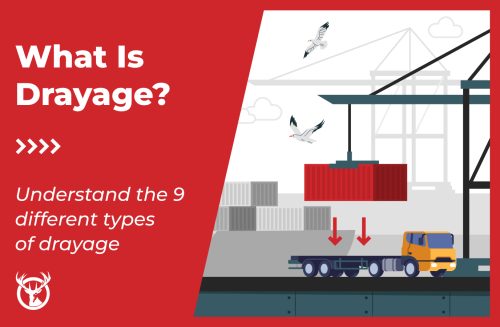More than two-thirds of all ecommerce shopping carts have been abandoned in 2020 and shipping prices and speed remain two of the top reasons. People want your products delivered to them quickly and they want to avoid surprises when it comes time to pay.
For most ecommerce companies, that means having two-day shipping options with clear pricing or as a free offer. While that’s tempting on the sales side, it’s tricky when looking at operational costs and business management. It leaves people wondering:
How can a company offer and afford two-day shipping?
There are multiple steps you can take to having the capability to support two-day shipping for your customers, as well as ways to control these costs and not destroy your margins. This guide is designed to help you start down that road, learn what questions to ask, and determine the best path forward to profitability.

TL;DR:
Key takeaways

Two-day shipping is crucial for ecommerce success, with shipping speed being a top reason for cart abandonment.

Two-day shipping means delivery within two days after order processing, not two days from purchase.

Companies can offer affordable two-day shipping by including costs in product prices or setting minimum order thresholds.

Working with a 3PL can reduce shipping costs through strategic warehouse locations and carrier discounts.
How does 2-day shipping work?
Let’s get to the heart of the matter and define what we mean by 2-day shipping, because there’s more to it than many customers think.

DEFINITION: Two-day shipping is the ability to get a complete order to your customer’s door within two days after the order is processed. This includes transportation from your warehouse via a carrier to the customer, but does not include order processing time.

Two-day shipping is the ability to get a complete order to your customer’s door within two days after the order is processed. That’s from your warehouse via a carrier to the customer’s open arms. Depending on your location and the customer’s location, there are two options from your carriers:

Speedy ground shipping for short distances.
Ground is often your cheaper option and can give you significant coverage, though it won’t reach everyone.

Air for longer distances.
This is your more expensive choice if you’ve promises to keep for those far-away customers.

NOTE: Most customers don’t realize there’s an order processing step. They expect two-day shipping to cover the two days after they buy from you, not two days after the order is processed. This disconnect can lead to customer dissatisfaction if not properly managed.
What it doesn’t include is order processing time, which is how long it takes the order to travel from your ecommerce store’s checkout page through inventory or warehouse systems to create the order and get it to pickers to start the fulfillment process. Most of your customers don’t realize there’s an order processing step. So, they’ll expect two-day shipping to cover the two days after they buy from you.
This customer expectation is one reason that many companies work with a 3PL – large warehouses and longer shifts make it easier for systems to process orders and for them to get picked and packed quickly, minimizing delays before an order can be shipped. A 3PL that offers multiple fulfillment locations can also reduce your costs by having a larger coverage area for two-day ground shipment.
How can I offer 2-day shipping?
We often have customers approach us about how they can offer two-day shipping and what they’re usually asking is: How can I afford to offer two-day shipping?
That’s a very different question because. Affording the offer means you’re covering costs in revenue while minimizing expenses. One is a pricing issue and the other is about laying the groundwork and infrastructure to get things moving quickly enough. Here are some of your options.
How do I price two-day shipping?
Amazon has thrown a wrench in shipping for many ecommerce companies because it offers two-day shipping via Prime. Through clever marketing, most people see this as a “free” offer, even though they pay for it in the Prime membership. Because Amazon doesn’t breakdown costs per order — and because people use Amazon often — the process is frictionless enough that people treat it as a free offer.
It’s unlikely that your ecommerce business has enough ongoing, repeat customers to create your own Prime-like system (if you, then Amazon gives you a great pricing blueprint). Instead, you’ll need to address costs for two-day shipping in one of a few ways, especially if you want to make it feel free to customers.
Include it in product purchase price
01
If you want to provide affordable shipping while meeting two-day demands, or even offer it for free, your first option is to increase the price of products. Baking shipping costs into purchase prices can help cover these costs while also giving you a way to please customers.
This practice is common and beneficial because people don’t get any surprises at checkout. They know what they’ll pay, and the only increase comes from taxes, which they expect. One of the better ways so figure out pricing is to determine the cost of two-day shipping for your average order. Then, divide that cost by the number of products in your average order. That’ll give you a rate to use per product to ensure costs are covered.
This may not make sense if there’s a wide range of pricing in your offers, so adjust and test accordingly to find the right mix that won’t impact sales but also will cover your costs. Resist the urge to try and profit off of shipping. You want to cover your expenses.

PRO TIP: Test different pricing strategies by comparing customer response. Would your customers prefer a $25 order with no shipping costs or a $20 order with $5 shipping? Data from these tests will help you find the optimal pricing strategy.
You want to think about how you can test this offer by comparing it against existing sales. Would your customers be more inclined to take a $25 order with no shipping costs or a $20 order with $5 shipping? Baking the price into product costs is one way to have that order reach $25. The other option is what we’ll look at next.
Set a minimum threshold
02
For companies that want to offer two-day shipping to customers but have lower average order values, you might be able to use this as a carrot to get people to spend a little more. Instead of trying to cut other areas and margins to afford expedited shipping, get people to bump their order value up high enough to cover it.
You can do this directly through each order — think of those ads you’ve seen for “free shipping on orders over $25.” Or you can do this through your loyalty and rewards programs. People sign up and once they meet a certain tier/level — based on how much they’ve bought in the past — they start unlocking free shipping.
Loyalty programs can be a little more difficult to manage, so some companies combine these elements. If you sign up for a recurring purchase of dog food, for example, that’s $25 or more, you get free two-day shipping. This encourages people to buy from you, sets up recurring revenue, and defines the minimum threshold. They’ll get convenience and predictability for a product they need, just like you get convenience and predictability for the revenue you need.
Packages and deals can help push customers up to that higher threshold, so don’t be shy about making additional offers to increase overall sales.

Key Takeaway: On the backend, remember that it takes your team about as much time for an order with 5 products as it does for one with 3 products. Labor and materials don’t scale significantly, so you’re getting more out of your dollars by encouraging people to buy more at once.
On the backend, remember that it takes your team about as much time for an order with 5 products as it does for one with 3 products. Labor and materials don’t scale significantly, so you’re getting more out of dollars by encouraging people to buy more at once.
Calculate what you can handle
Baking shipping into purchase prices or setting a threshold is designed to get people to buy more while you can afford two-day shipping offers. If successful, they’ll enable you to offer 2-day shipping without harming margins or overall expenses.
As you’re running promotions and making deals, keep on top of the numbers. You’ll want to understand what you can afford and how these offers are impacting your business. There’s good data here to help guide future plans.
One thing many small ecommerce stores notice is that they’re making less revenue on the first sale, but customers are more likely to come back and make a second purchase. Prioritizing early deals to generate recurring sales may lead to greater long-term profits. Rely on your warehousing software to help you understand costs and track sales via ecommerce tools to compare these changes and how profit adapts.
How can an ecommerce business manage 2-day shipping expenses?
Shipping costs can become a big chunk of your operational expenses if you’re constantly overnighting things to meet your promises to customers.
The best way to be able to afford a two-day shipping offer is to build capability first. Get a team in place that can handle order processing and speed requirements to give you two actual days to meet deadlines, instead of running behind and having to come out of your own pocket for faster deliveries. If your space isn’t set up to handle high volumes or immediate turnaround and order processing, start thinking about outsourcing. It’ll save you time, money, and customers.
3PLs like Red Stag Fulfillment give you an extra boost, too, because we’ve got distribution facilities located to make it easy to reach the majority of Americans within two days and we ship at lower rates because of our discounts from carriers. You benefit from the larger volume of shipments that a 3PL does daily
Proper facility location is a one-two punch to keep this affordable for two reasons:
01
Goods are physically closer to customers so you can reach them via ground without the most expensive overnight options.
02
Carriers charge you less when packages travel a shorter distance. Having facilities near people means your packages travel fewer zones, which reduces the cost of every shipment. You save whether or not you’re pushing for a two-day turnaround.
Do I need to offer 2-day shipping?
Roughly half of ecommerce shoppers in the U.S. already receive packages within 2-3 days on most orders and that same group say they are likely to switch to a competitor if a company delivers products late or takes too long.
We used to talk about 2-day shipping being something that “some of your customers want,” but it’s now a reality of what most of your customers experience. They don’t view speedy shipping and automated emails with tracking information as nice bonuses. It’s just part of ecommerce and what’s expected.

ALERT: Not providing fast shipping hurts businesses, especially if you’re not upfront about it. Americans know that specialty products and handmade items will take longer, but companies only receive that patience when they set expectations upfront.
Not providing fast shipping hurts businesses, especially if you’re not upfront about it. Americans know that specialty products and handmade items will take longer, but companies only receive that patience when they set expectations. If you’re in the market of common goods with plenty of competitors, fast shipping must be a part of your business.
Whether you work with someone like Red Stag Fulfillment or manage orders and fulfillment yourself, customers expect packages to be delivered quickly and arrive on-time. You must keep up with customer demands. With the growing number of next-day and same-day services, we think customers will soon start to ask for those options more often, too.Get prepared now and make the connections you need to reduce your costs.
If you’re not sure how to manage that, contact us to learn about not just cutting labor and storage costs but optimizing packaging, reducing dimensions, and shipping from multiple locations.
Talk With UsFrequently asked questions

What is the difference between 2-day shipping and 2-day delivery?
Two-day shipping refers to the transit time from warehouse to customer after the order is processed, while two-day delivery often means the entire process from order placement to delivery. Always clarify your shipping policy so customers understand exactly what to expect.






How much does it cost to offer 2-day shipping?
The cost of offering 2-day shipping varies widely based on your product size and weight, customer locations, warehouse locations, and shipping volume. Working with a 3PL like Red Stag Fulfillment can help reduce these costs through strategic warehouse placement and carrier discounts.











